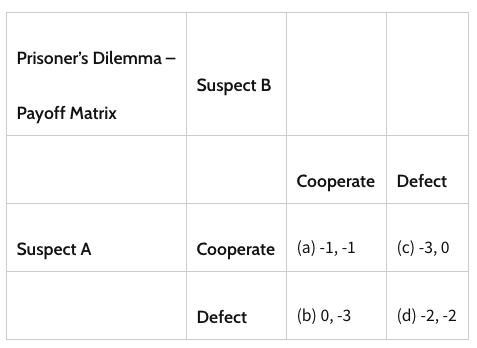After more than twelve years in startups and venture capital, you learn to recognize the patterns. You see the cyclical nature of hype, the ebb and flow of capital, and the perennial challenges of building something from nothing. You get a feel for the rhythm of the game.
But this isn’t just a change in rhythm. The ground beneath our feet is fundamentally shifting. A handful of powerful, accelerating forces are converging to rewrite the startup playbook I’ve known for two decades. The old pages are not just yellowed; they are becoming obsolete.
The ability to build and tell stories is cheaper and faster than ever. The cost of getting feedback on those stories and products has collapsed, thanks in large part to AI. Yet, in this world of infinite creation, the currency of human attention has never been scarcer or more valuable. All of this is happening as capital markets are tightening, demanding a clearer path to liquidity than the speculative bets of the last decade.
These aren’t separate trends. They are interlocking gears in a new machine. And for founders, investors, and even consumers, understanding this new machine is a matter of survival.
For Founders: The MVP is Dead. Long Live the MVT.
Let’s be blunt: The Minimum Viable Product is dead.
The classic MVP was an answer to the question, “Can we build it?” It was a test of technical feasibility and a hedge against wasting engineering resources. But today, the answer to “Can we build it?” is almost always “Yes.” With modern tools and AI co-pilots, a small, determined team can build almost anything.
That is no longer the operative question. The new question is, “Should it exist?”
This shifts the core activity of a startup from building to testing. Welcome to the era of the MVT: the Minimum Viable Test. An MVT isn’t a clunky product; it can be a photorealistic landing page, a simulated demo, an AI-powered concierge service, or a targeted ad campaign for a product that doesn’t exist yet. Its goal isn’t to acquire users, but to acquire evidence.
The paradox is that while the cost of testing a hypothesis has collapsed, the cost of capturing attention has skyrocketed. In a world where anyone can generate a product, noise becomes the dominant market force. A functional app is now table stakes, not a differentiator.
This elevates a founder’s other skills to the forefront. The most valuable founders of the next decade won’t necessarily be the best engineers; they will be the best storytellers and community architects. They will understand that the most durable moat isn’t a block of code, but a block of dedicated, engaged people. The new playbook is to build the audience before you build the product. The distribution channel is the asset.
For Investors: Alpha is Shifting, and Capital Isn’t King
For years, the venture capitalist’s edge came from access: access to proprietary deal flow and access to information. Both are eroding. AI agents will soon be able to scan every GitHub repository, every academic paper, and every new business filing, surfacing interesting signals for anyone to see. The “I found it first” alpha is vanishing.
More profoundly, for many early-stage companies, a check is no longer the most valuable thing an investor can provide. When a founder can run a dozen MVTs on a shoestring budget to validate their core idea, their primary bottleneck isn’t capital; it’s breaking through the noise.
They don’t need your money as much as they need your leverage.
The venture firm of the future cannot be a simple financial instrument. It must become a platform for leverage. The new value-add isn’t just a network of downstream investors; it’s a proprietary media engine that can guarantee an audience. It’s a stable of specialized AI agents that can automate a startup’s back office. It’s a data co-op that gives portfolio companies an unfair analytical advantage.
This demands a change in how we, as investors, evaluate founders. We must move beyond pedigree and PowerPoints to ask tougher questions. Is this founder a master of the MVT loop? Can they build a tribe? Can they tell a story that bends the attention market in their favor?
In this new reality, the generalist fund will be squeezed. The winners will be hyper-specialized firms that create a gravitational pull for the very best talent and ideas in a narrow domain, not just because of their capital, but because of the unique leverage they provide.
For All of Us: The New Gatekeepers
This rewiring changes the game for everyone. The line between consumer, fan, and early-stage backer has completely blurred. Through our clicks, our shares, our feedback, and our direct-to-creator funding, we are all on the cap table now. Our attention is the new seed round.
This brings a paradox. We have access to an unprecedented explosion of niche products and services tailored to every conceivable interest. Yet, we also face a tsunami of AI-generated sludge, low-effort “startups,” and sophisticated misinformation. In this environment, our most critical skill as individuals will be discernment.
We are trading one set of gatekeepers—the VCs in Sand Hill Road boardrooms—for another: the opaque, ever-shifting algorithms of TikTok, Google, and X. We have democratized access to the arena, but a new, invisible emperor still decides who thrives with a flick of an algorithmic thumb. Are we truly better off? I’m not so sure.
What I am sure of is that the game has changed. It’s no longer about who has the capital to build a fortress, but who has the leverage to command attention in a world of infinite creation. It’s a faster, more volatile, and intensely more personal game than ever before. It demands that we all—founders, funders, and fans—become more intentional about where we place our most valuable asset: our attention.




